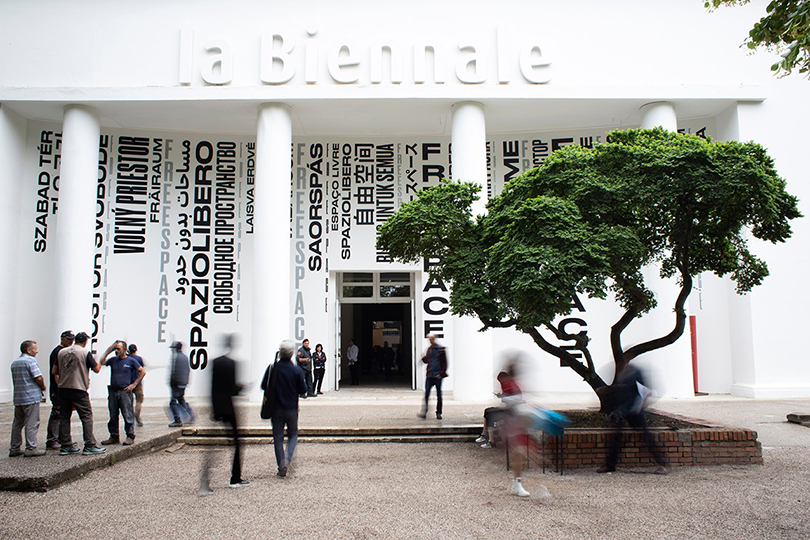
David Burney, founder and head of Pratt’s Urban Placemaking and Management (UPM) program; John Bezemes, MS UPM ’18, and Kristin Brown, MS UPM ’19, gave presentations at a symposium entitled “Past Present and Future of Public Space. Knowledge sharing toward implementation of the New Urban Agenda” at the 2018 Venice Biennale Architecture in September.
Curated by Luisa Bravo, educator and president of City Space Architecture in Bologna, Italy, the symposium centered on research concerning the use of public space and cities within various geographical contexts. The two-day event also focused on the New Urban Agenda, a global initiative established by the United Nations in 2016. Pratt Institute was one of several leading institutions promoting the discourse of public space at a global level that were selected to participate in the symposium.
The symposium focused mainly on the work academic institutions are doing to promote the UN goals regarding public space. (UN Sustainable Development Goal 11.7 states, “by 2030, provide universal access to safe, inclusive and accessible, green and public spaces, particularly for women and children, older persons and persons with disabilities”.) “As one of the few academic institutions with a program focused specifically on public space, it was important that Pratt be represented at the symposium,” said Burney. “Although more than 20 universities were represented, Pratt's UPM program is the most relevant to the promotion of SDG 11.7,” he added.
Burney’s presentation, on Pratt’s Urban Placemaking and Management graduate program, provided an overview of the department as well as the larger mission and impact of Pratt’s Graduate Center for Planning and the Environment. Bezemes and Brown gave presentations that highlighted the Placemaking program’s focus on community engagement and its multidisciplinary approach to the development, design, and programming of public space.
Bezemes’ research presentation featured his case studies of public spaces in Boston and New York that identified a typology of spaces that serve the needs of gay men. Bezemes' conclusions and recommendations focused on public policy and design issues that have broader implications for the way we accomodate marginalized groups in public space. Brown presented the work she had undertaken as part of a team of Pratt professors and students who were invited to assist the Brooklyn Bridge Park Corporation in developing a “Vision Plan” for the design and programming of the space beneath the Brooklyn Bridge approach ramp as an extension of Brooklyn Bridge Park. Brown explained how Pratt's team engaged the local community with stakeholder interviews and a community workshop that identified community ideas about the use of the space. The Vision Plan, which proposed how these ideas might be accomodated in the space, will be submitted to the park’s design team.
In addition, Pratt's delegation participated in roundtable discussions on themes including gentrification and the intersections of placemaking and architecture with academic leaders from institutions such as Meiji University in Japan and Universitat Politècnica de Catalunya in Spain. These discussions facilitated learning and knowledge sharing within the international placemaking community, enhancing the understanding of current topics and challenges in the field and advancing placemaking education.
This year marks the 16th edition of the Venice Biennale Architecture exhibition, which runs through November 2018 in Venice, Italy.
The proceedings of the symposium will be published in early 2019.
Image: Courtesy La Biennale di Venezia.